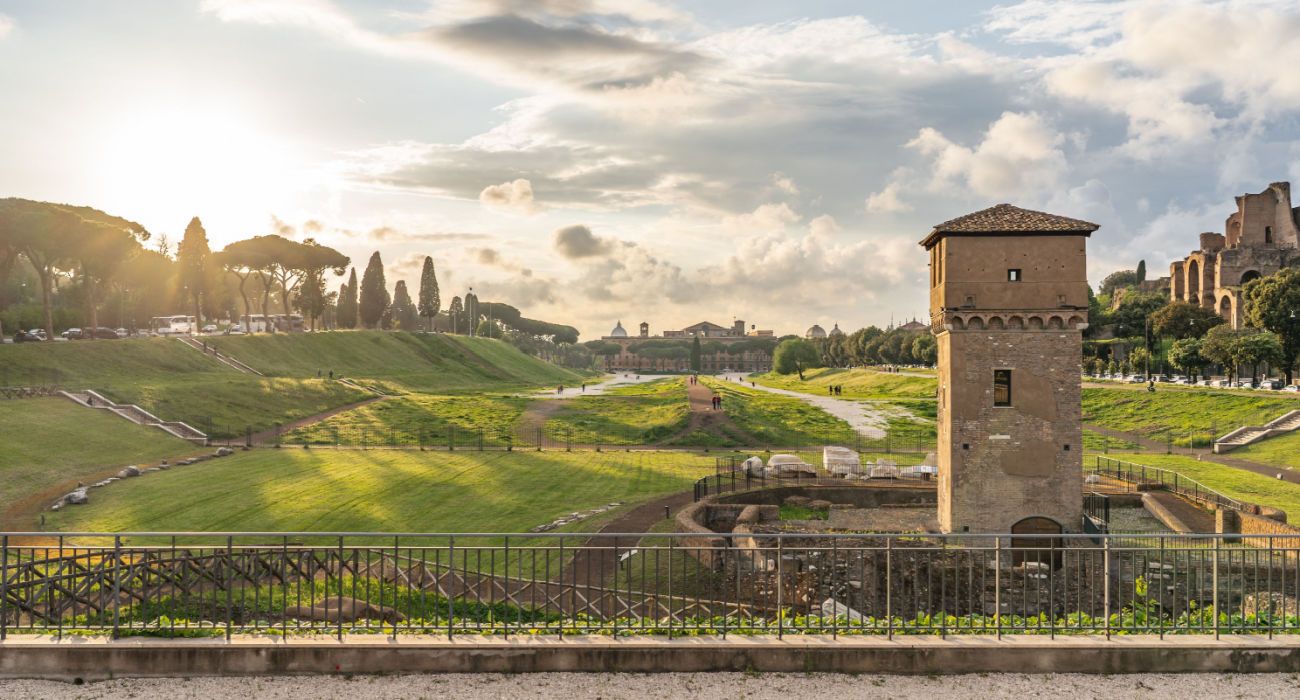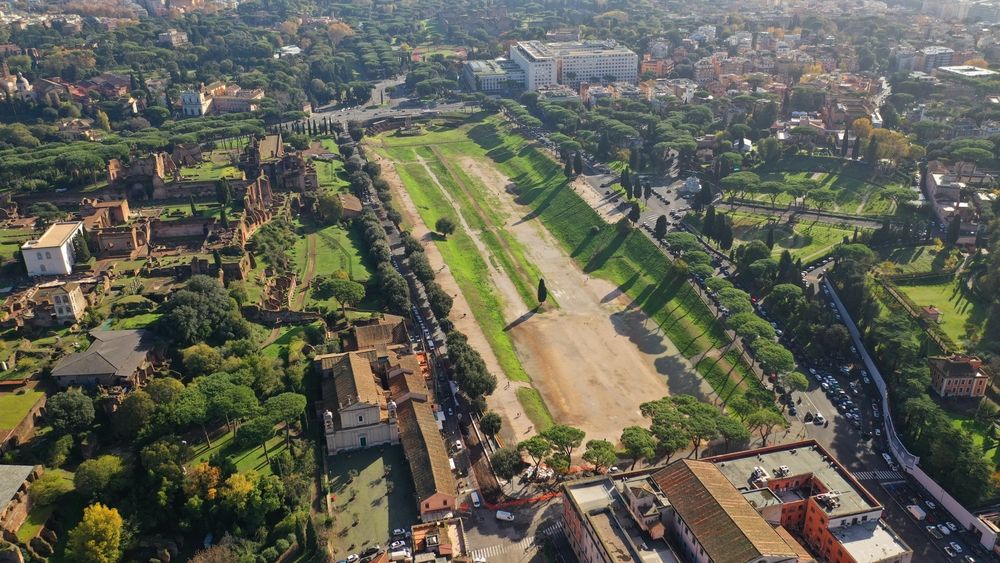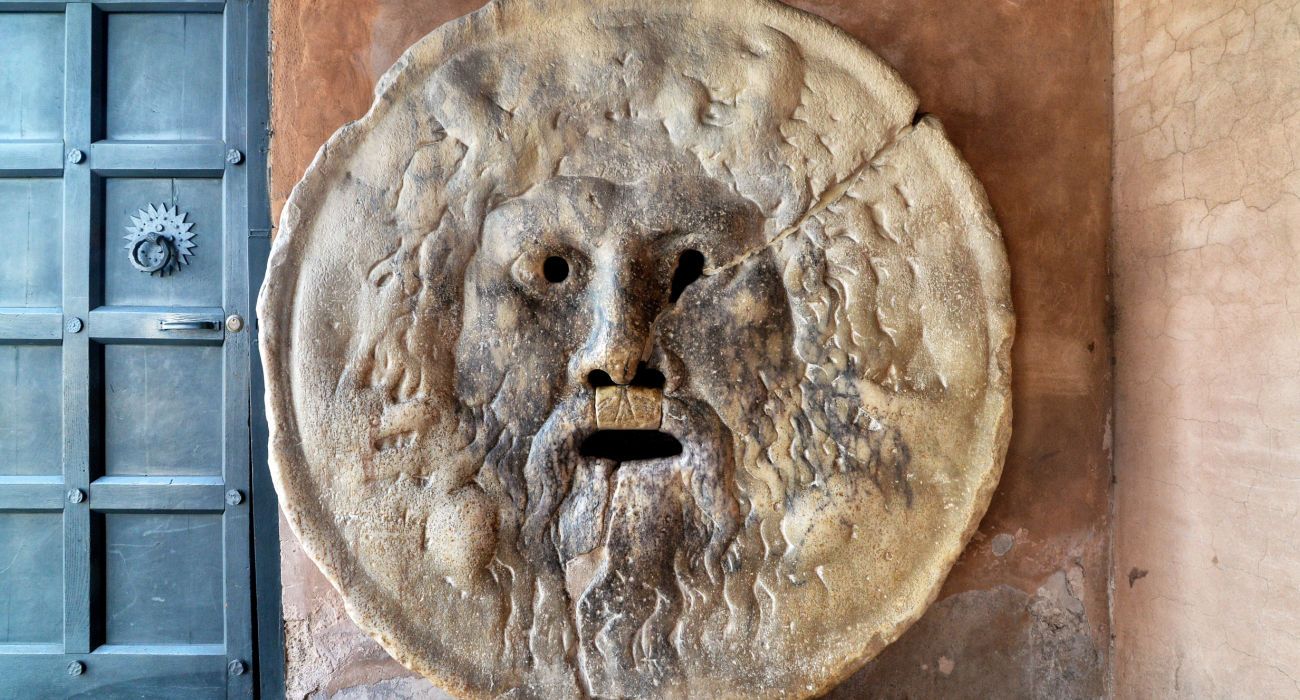Quick Links
While the Colosseum is perhaps the most famous Roman ruin in Rome today, it is not the only mostly-preserved Colosseum (or oval amphitheater) in the world. There is another Colosseum-like amphitheater in Tunisia. But there were plenty of entertainment venues in Rome to see and explore - the largest of which was the Circus Maximus (even larger than the Circus of Flaminius and the Circus of Maxentius).
There are countless attractions to visit in ancient Rome while in the modern city of Rome - one indispensable attraction is the old Roman Forum and its extensive ruins. In Rome, don't forget to take a walk or cycle along the Appian Way - the oldest and most famous of the ancient Roman roads.
Circus Maximus: The Largest & Oldest Circus In Rome
The Circus Maximus, or 'largest circus', is an ancient Roman chariot racing stadium and a massive entertainment venue in Rome (even if its ruins are far less impressive than the Colosseum). The important entertainment of Roman cities included theaters, amphitheaters, and hippodromes (circuses were the Roman equivalent to Greek hippodromes). Not only was it the first stadium of ancient Rome, but it was also the largest. It became the model for circuses around the Empire.
- Length: 621 meters or 2,037 feet
- Width: 118 meters or 387 feet
- Capacity: 150,000-300,00 Spectators
The Circus Maximus is located in the valley between the Palatine and Aventine hills, and it could accommodate over 150,000 spectators - a large portion of the city's population. Some sources claim that the extended precinct had space for 300,000 spectators.
The first chariot racetrack in Rome was built during the 6th BC (dating back to the Roman Kings), and it hosted chariot races until the 6th century. It took its distinctive shape under Julius Caesar and underwent changes throughout its life. During the reign of Nero, a fire broke out in the Circus and swept through the stands and shops, and destroyed much of the city (it is said that Nero blamed the fire on the Christians and used it to launch the first great persecution of the Christians).
Later the Circus was rebuilt entirely in stone, but after the 6th century - after the Western Roman Empire had fallen - it fell out of use. It was prone to flooding, and over time alluvial soil and debris have built up. Not the original track is buried 6 meters beneath the modern surface.
Games, Chariot Races, & Gladiatorial Races Of Circus Maximus
The ancient Romans once flocked to the venue to watch Ben Hur-style chariot races and other spectacles. Chariot races would complete seven laps of the Circus Maximus. Many of these charioteers were slaves fighting for their liberty.
Other events included famous battle reenactments. One example of an event was a contest organized by Pompey with a group of barbarian gladiators and 20 elephants. Notably, the Colosseum once had a flooded floor for naval battle reenactments. Today one of the great Roman attractions in France is the annual Great Roman Games, held in a real Roman amphitheater and decidedly less bloody than the old Roman games.
What To Expect Visiting The Circus Maximus Today
Today visitors can see the ruins of the once impressive circus, and its site is now part of a public park. Little of the ancient structure remains, and some tourists are left disappointed. Only the enormous terrace is left that preserves the form of the circus - although the stone has been removed. It was a convenient quarry for good quality building stone during the renaissance.
It was partially excavated in the 20th century. Now it is an important public space that hosts rallies and music concerts.
- Metro station: Circo Massimo, line B.
- Opening Hours: Not Applicable (24/7)
- Admission: Free
The Circus Maximus is easy to visit; it is located in the heart of the ancient city of Rome. Palatine Hill is only 277 meters away, the Arch of Constantine is 610 meters away, and the Colosseum is only a short stroll from the circus. One of the strangest attractions in Rome is the Mouth of Truth - put this on one's bucket list, too, as it's only 393 meters from the circus.
The large green space that makes up the area where the Circus Maximus once stood is free to enter, and there are no opening or closing times. The Circus Maximus is an attraction where people should find a model rendering of the circus and use their imagination to understand what it was like.
The archeological area of the excavations is open to the public from Tuesday to Sunday and is open from 9.30 am to 7.00 pm during the summer. Entry to the excavations is 5 Euros for adults.





